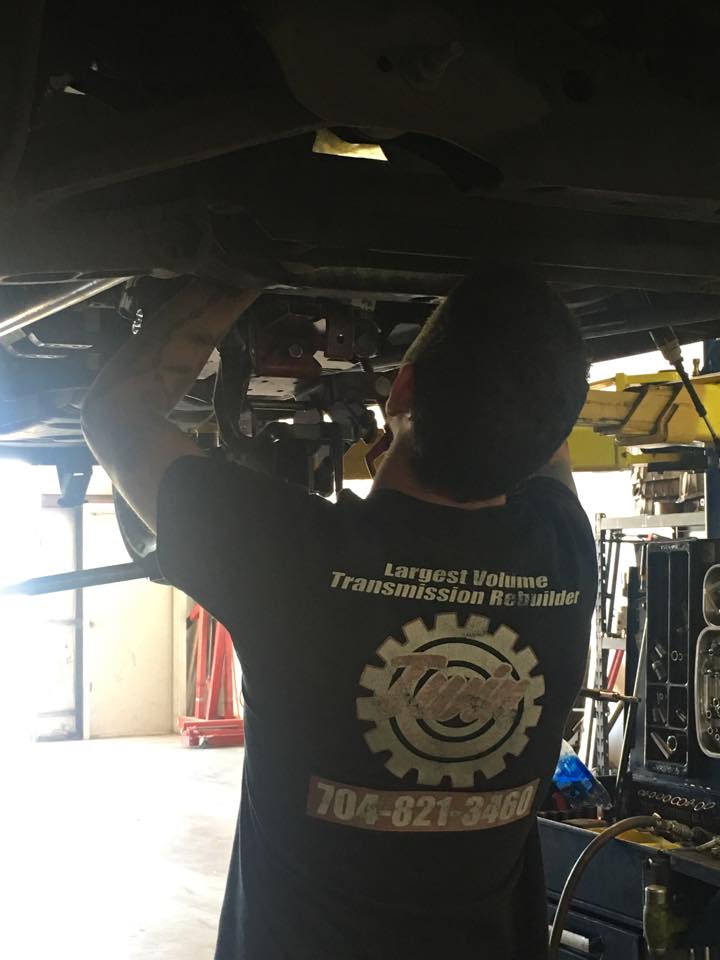Honda transmission issues often manifest as delayed shifting or strange noises. Diagnosing the problem requires checking the transmission fluid level and quality.
Navigating the complexities of Honda transmission problems can be daunting for car owners. The transmission is the heartbeat of your vehicle, and when it starts to falter, it can lead to a range of performance issues that can compromise your car’s reliability and safety.
Early detection of transmission troubles is critical, as it can prevent minor issues from escalating into major repairs. Understanding the signs of transmission difficulties, such as slipping gears, jerking movements, or a burning smell, is essential for maintaining your Honda’s longevity. Regular maintenance, such as fluid changes and inspections, plays a key role in transmission health. By staying vigilant and addressing problems promptly, you can ensure your Honda remains a dependable mode of transportation.

Credit: twincharlotte.com
Introduction To Honda Transmission Issues
Honda vehicles are known for their reliability and longevity. Yet, transmission problems can arise, affecting performance and safety. Understanding the signs of transmission issues is crucial. It ensures prompt repairs, maintaining the car’s integrity. This section covers common symptoms and the importance of quick troubleshooting.
Common Signs Of Transmission Problems
- Delayed Engagement: The car hesitates before moving.
- Strange Noises: Whining or clunking sounds emerge.
- Fluid Leaks: Reddish fluid appears under the vehicle.
- Warning Lights: The dashboard signals with an alert.
- Shifting Issues: Gear changes are rough or erratic.
Why Timely Troubleshooting Matters
Immediate attention to transmission issues prevents further damage. It saves on costly repairs. Safe driving conditions are ensured. Vehicle value and performance are preserved. Recognize the signs and act fast to keep your Honda running smoothly.
Identifying Your Transmission Type
Knowing your Honda’s transmission type is vital. It guides your troubleshooting process. Let’s dive into the common types and their identifiers.
Automatic Vs. Manual
Honda vehicles come with either automatic or manual transmissions. Spotting the difference is straightforward.
- Manual transmissions have a clutch pedal. They require manual gear shifting.
- Automatic transmissions manage gear changes themselves. No clutch pedal is present.
Your Honda’s documentation will confirm the transmission type. Check the owner’s manual if unsure.
Cvt: A Unique Category
The Continuously Variable Transmission (CVT) is a special case. It differs from traditional automatic transmissions.
- CVTs offer a seamless driving experience. No distinct gear shifts occur.
- They adjust continuously to engine speed. This maximizes efficiency.
Identify a CVT by checking for gear shift points. CVTs lack these. Instead, they provide a smooth acceleration curve.
Look for ‘CVT’ on your Honda’s back or in the manual. This confirms its presence.
Common Honda Transmission Problems
Honda vehicles are known for reliability. Yet, transmission problems can arise. Understanding these issues is key. Let’s delve into the common Honda transmission problems.
Slipping Gears
A telltale sign of transmission trouble is gears slipping. This issue feels like the car changes gears without reason. Drivers might notice a sudden change in engine pitch or a loss of acceleration. Slipping gears require immediate attention.
Delayed Engagement
Another concern is delayed engagement. This happens when shifting from ‘Park’ to ‘Drive’. The delay before the car moves is a red flag. It often signifies fluid issues or wear and tear.
| Problem | Symptoms | Immediate Action |
|---|---|---|
| Gear Slippage | Unexpected gear shifts, engine pitch change. | Check transmission fluid, consult a technician. |
| Delayed Engagement | Pause in movement after shifting gears. | Monitor for recurring delays, get professional help. |
- Check transmission fluid level and color.
- Listen for unusual noises when gears shift.
- Feel for changes in the vehicle’s performance.
- Look out for warning lights on the dashboard.
Regular maintenance prevents severe damage. Keep an eye out for these symptoms. Early detection saves time and money. Trust a skilled mechanic for repairs.
Credit: www.ridgelineownersclub.com
Diagnostic Tools And Techniques
For Honda owners, transmission issues can be daunting. Diagnostic tools and techniques are essential to identify the problem. This guide explains how to use scanners and manual inspection for troubleshooting.
Using Obd-ii Scanners
OBD-II scanners are crucial for modern diagnostics. They read error codes from the car’s computer. Follow these steps:
- Plug the scanner into the OBD-II port.
- Turn on the ignition, but don’t start the engine.
- Allow the scanner to initialize and read the codes.
- Record any transmission-related codes.
Interpreting the codes requires a reference manual or online database.
Manual Inspection Tips
Beyond scanners, a manual inspection can reveal issues. Use these tips:
- Check fluid levels and color. Dark or burnt smell indicates a problem.
- Inspect for leaks under the vehicle.
- Feel for gear shifting delays or slips while driving.
Consider these steps as part of a regular maintenance routine.
Quick Fix Solutions
Got a Honda with gear shifting woes? A few quick fixes might help. Let’s dive into simple solutions that can get your transmission back on track.
Fluid Level And Quality Check
Transmission fluid is vital for smooth gear shifts. Low or dirty fluid can cause trouble. Here’s how to check it:
- Turn on the engine; let it warm up.
- Find the dipstick; it’s usually bright-colored.
- Pull it out; wipe it clean.
- Insert it back; pull out again to check level.
- Check the color: Bright red is good; brown or black is bad.
- Smell it: A burnt odor indicates a problem.
If fluid is low, add more. If it’s dirty, a fluid change is needed.
Replacing The Transmission Filter
A clogged filter can hinder transmission performance. Here’s a simple guide to replace it:
- Locate the filter; consult the manual.
- Drain the fluid; use a pan to catch it.
- Remove the old filter; usually held by screws or clips.
- Install the new filter; secure it properly.
- Replace the fluid; use the type specified for your Honda.
Always use a high-quality filter for the best results.
When To Seek Professional Help
Car troubles can be frustrating, especially with transmissions. Knowing when to seek professional help is crucial for your Honda’s health. Let’s explore the signs of serious transmission issues and how to find expert mechanics.
Symptoms Of Major Transmission Damage
Transmission problems can escalate quickly. Watch for these warning signs:
- Delayed Engagement: Your car hesitates before moving forward.
- Slipping Gears: Your Honda shifts for no reason.
- Fluid Leaks: Reddish fluid under your car indicates a leak.
- Strange Noises: Whining or clunking sounds are a bad sign.
- Warning Light: The check engine light might signal transmission trouble.
If these symptoms appear, it’s time for a mechanic’s help.
Finding A Reliable Mechanic
Choose a mechanic wisely. Your Honda deserves expert care.
- Seek certified technicians with Honda experience.
- Read reviews and ratings online.
- Ask for recommendations from Honda owners.
- Ensure they provide a clear estimate before starting work.
Trust is key. A reliable mechanic keeps your Honda running smoothly.
Preventive Measures And Maintenance Tips
Taking care of your Honda’s transmission extends its life. Proper upkeep avoids breakdowns. Learn how to maintain your transmission with these tips.
Regular Fluid Changes
Transmission fluid keeps gears moving smoothly. Over time, it degrades. Change it as Honda recommends. This usually means every 30,000 to 60,000 miles.
Check fluid levels monthly. Look for a dipstick under the hood. The fluid should be pink or red. Dark or burnt-smelling fluid needs changing.
Follow these steps:
- Turn off the car.
- Pull out the dipstick.
- Clean it and reinsert.
- Remove again to check level.
Avoiding Common Mistakes
Some habits harm your transmission. Learn what to avoid for a healthy car.
| Bad Habit | Impact |
|---|---|
| Towing Over Limit | Strains transmission |
| Ignoring Warning Signs | Leads to damage |
| Skipping Service | Reduces lifespan |
Use your parking brake on hills. It helps your transmission. Shift to Neutral at red lights. It gives your transmission a break.
Remember, maintenance keeps your Honda happy. Treat your transmission well for a smooth ride.

Credit: m.youtube.com
Frequently Asked Questions
How To Tell If A Honda Transmission Is Bad?
Check for transmission slipping, rough shifts, delayed engagement, fluid leaks, and unusual noises. These symptoms often indicate a bad Honda transmission. Regular maintenance can help prevent major issues.
Which Honda Models Have Transmission Problems?
Several Honda models have faced transmission issues, notably the Accord, Civic, Odyssey, and Pilot, particularly in older models from the early 2000s. These problems often involve transmission slipping, jerking, or failure, requiring significant repair or replacement.
What Can Be Mistaken For Transmission Problems?
Engine issues, low transmission fluid, and worn clutch components can often mimic transmission problems. Regular maintenance helps identify these issues early.
What Years Did Honda Have Bad Transmissions?
Honda faced transmission issues primarily in certain models from 1999 to 2004.
What Are Common Honda Transmission Issues?
Slipping gears, delayed shifting, and unusual noises are frequent complaints among Honda owners facing transmission problems.
Conclusion
Navigating Honda transmission issues doesn’t have to be daunting. By understanding common problems and their signs, you’re better equipped to tackle them. Remember, early detection and professional advice are key. Keep your Honda running smoothly by staying informed and proactive.
Drive safe and enjoy the journey with confidence.
















